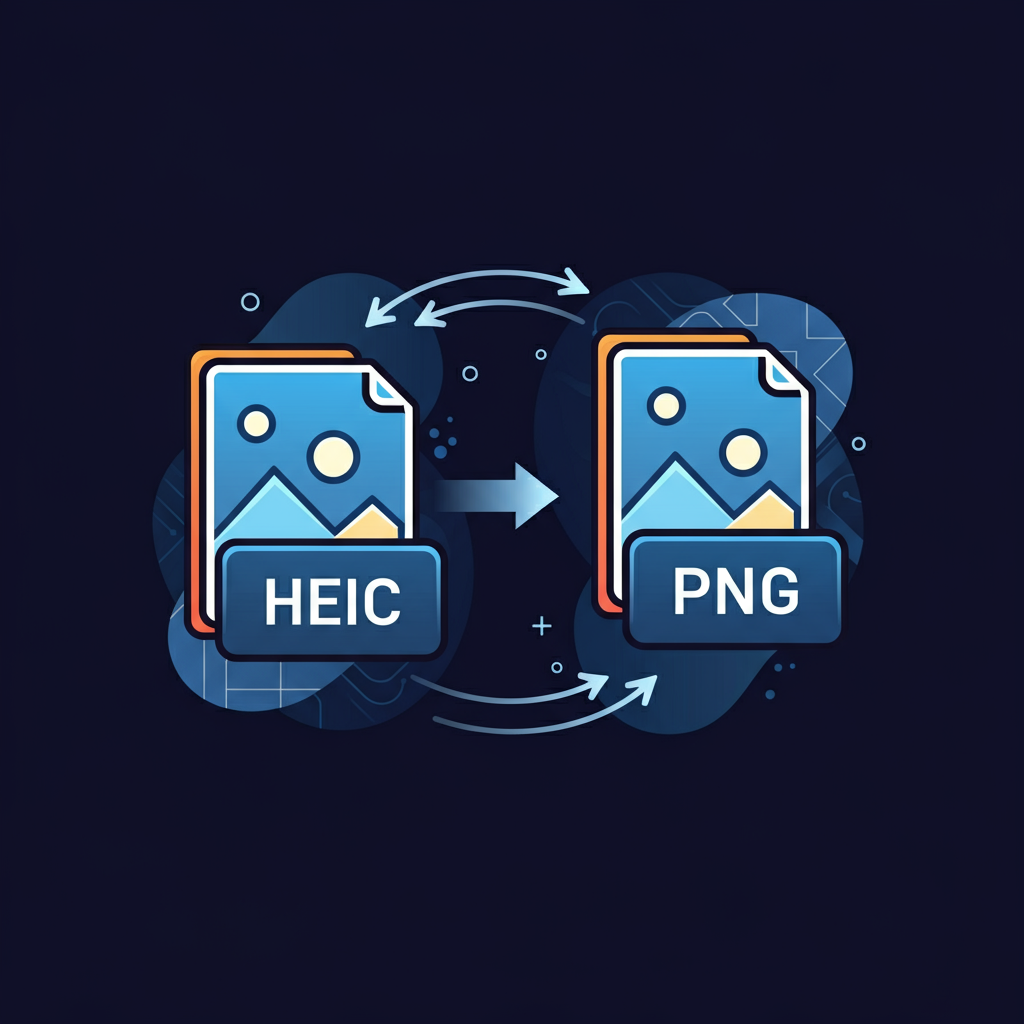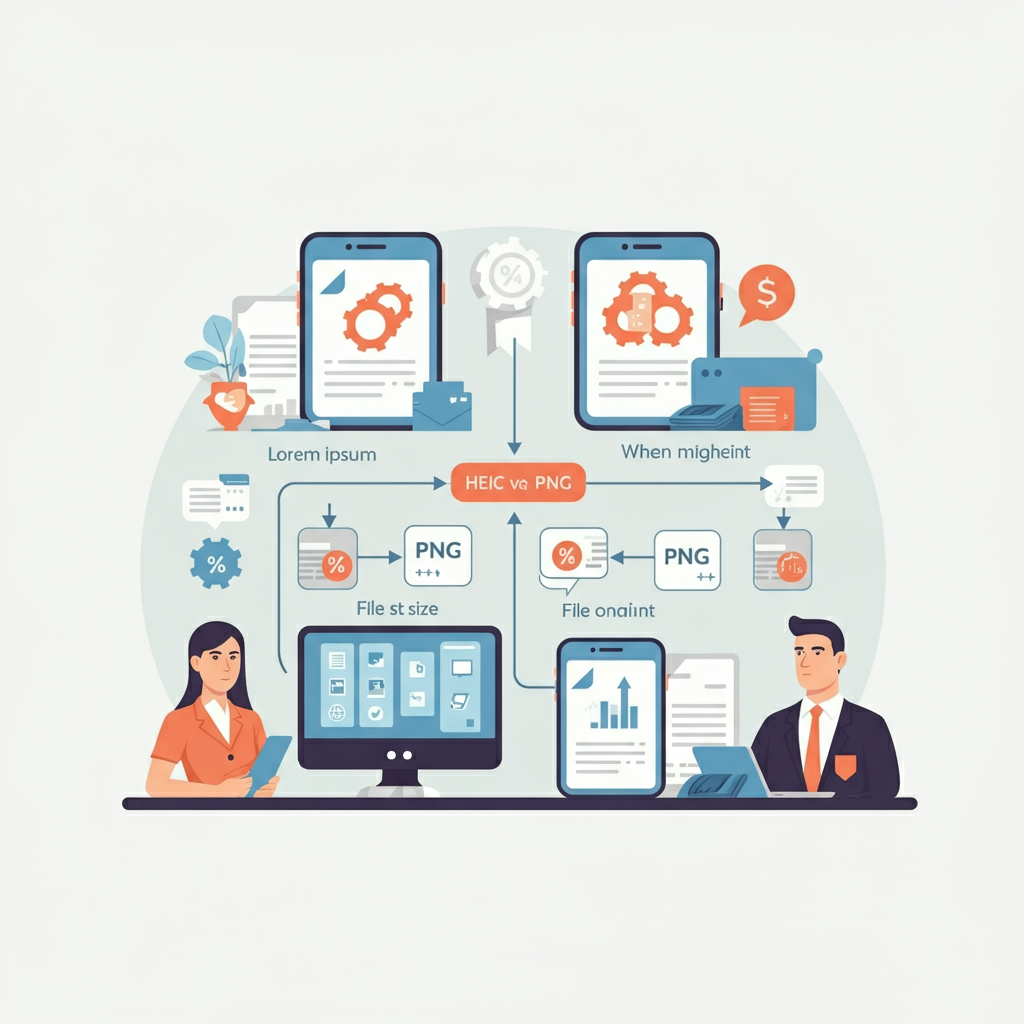With the rise of diverse digital formats, choosing the right image file type can make or break your workflow. Among the many options available, HEIC and PNG are two popular formats, but selecting between them isn’t always straightforward. Each serves different purposes and offers unique benefits.
This blog will compare HEIC vs PNG formats, highlight their strengths, and explain when and why you might need to convert HEIC to PNG (or vice versa). By the end, you’ll have a clear understanding of which format suits your needs and how to make these file types work for you.
What is HEIC?

HEIC, short for High-Efficiency Image Container, is a modern image file format developed by the Moving Picture Experts Group (MPEG). Introduced by Apple in 2017 alongside iOS 11 and macOS High Sierra, HEIC is designed to replace JPEG with technological advancements that enable efficient image compression without any quality loss.
Advantages of HEIC
- Advanced Compression
HEIC uses cutting-edge compression technology to produce high-quality images at nearly half the file size of formats like JPEG or PNG. This means you can save storage space without sacrificing photo clarity.
- Support for Enhanced Features
-
- Transparency similar to PNG.
- Non-destructive editing, where multiple layers or edits can be saved within a single file.
- Animation support, as seen with Apple’s Live Photos feature.
- Metadata Efficiency
HEIC manages metadata efficiently, allowing it to store details like geolocation and camera settings without inflating the file size.
- 10-bit Color Depth
Displaying over 1 billion colors, HEIC offers richer and more vibrant visuals compared to PNG or JPEG’s 8-bit color depth.
HEIC is particularly favored by Apple users, as the format seamlessly integrates into the iOS/macOS ecosystem. Despite its advantages, compatibility with non-Apple systems can sometimes be a challenge.
For More Detail: What is HEIC?
What is PNG?

PNG, which stands for Portable Network Graphics, is an image format widely used for purposes requiring high-quality visuals. It was created in the mid-1990s as a replacement for the GIF format and is now a staple for web graphics, design work, and images with transparency.
Advantages of PNG
- Lossless Compression
PNG files retain all original data even after editing. This feature makes it perfect for high-quality images like logos, illustrations, and design assets.
- Transparency Support
PNG excels at handling transparency, making it ideal for images layered over other designs or backgrounds.
- Best for Graphics
Unlike HEIC, PNG is optimized for non-photographic content, especially where sharp lines, colors, or text are involved.
- Universal Compatibility
PNG is supported by virtually all platforms, browsers, and applications, making it one of the most versatile image formats available.
While PNG is a great option for static, high-resolution visuals, it can generate larger file sizes compared to HEIC, which might be a drawback for those managing storage limitations.
HEIC vs. PNG: Key Differences
| Feature | HEIC | PNG |
|---|---|---|
| Compression | Superior compression with smaller file sizes | Uses lossless compression but with larger file sizes |
| Image Quality | Retains high quality with efficient compression | Maintains original quality due to lossless compression |
| Transparency | Supported, though limited in accessibility | Highly supported, perfect for graphics or layered files |
| Color Depth | 10-bit (over 1 billion colors) | 8-bit (16 million colors) |
| Compatibility | Limited support outside of Apple and modern platforms | Universally compatible everywhere |
| Use Cases | Ideal for photos, especially on Apple devices | Perfect for web graphics, designs, and transparency-rich images |
When to Use HEIC
Here are a few scenarios where HEIC outshines other formats:
- Within the Apple Ecosystem
If you’re an iPhone, iPad, or Mac user, HEIC is optimized for seamless integration. The format works across Apple’s devices and software, offering fast uploads, efficient storage, and full compatibility.
- Saving Storage Space
HEIC’s smaller file sizes are a blessing for those with limited storage, especially on devices that don’t support expandable memory. For instance, photographers who work with hundreds of high-quality images daily will benefit greatly.
- Capturing Rich Visuals
With 10-bit color depth and advanced metadata, HEIC is ideal for photography enthusiasts looking to preserve high-quality, vibrant imagery.
When to Use PNG
While HEIC provides advanced compression and additional features, there are solid reasons to stick with PNG in certain situations:
- Web Graphics
PNG’s lossless quality and transparency handling make it the go-to format for creating logos, banners, and icons for websites.
- Images with Transparency
For designs or images requiring transparent backgrounds, PNG is an industry standard. It’s the best choice for layering multiple visuals.
- Universal Compatibility
If your target audience uses a variety of platforms, PNG ensures your content is viewable no matter what device or software they’re on.
Converting Between HEIC and PNG

There may be times when you need to convert HEIC files to PNG or vice versa, depending on your use case. Thankfully, there are various tools available to make this process quick and easy:
Conversion Tools & Methods
- Desktop Software
Use programs like Adobe Photoshop, GIMP, or XnConvert for bulk conversions.
- Online Tools
Free websites such as HEICtoPNG.com or CloudConvert offer simple HEIC to PNG conversions.
- Native Device Settings
On iPhones, go to Settings > Photos > Transfer to Mac or PC and select “Automatic” to convert HEIC files into PNG or JPEG during transfer.
Conversion Tips
- Keep a backup of the original HEIC file, as converting to PNG may result in larger file sizes.
- Use lossless methods to preserve image quality during conversion.
Choosing the Right Format for Your Needs
Both HEIC and PNG have their ideal use cases, and selecting between them depends largely on your goals. If you’re working with photography in the Apple ecosystem, HEIC’s compression and advanced features make it the obvious choice. On the other hand, PNG remains unparalleled in its support for transparent graphics and universal compatibility.
By understanding the differences and advantages of these formats, you can ensure your images are optimized for both quality and performance. Whether you’re saving space or creating web graphics, picking the right format or converting between them is now easier than ever.
If you’re looking for an easy way to convert files or streamline your image management process, explore some of the top tools mentioned above. Happy editing!

Leave a Reply